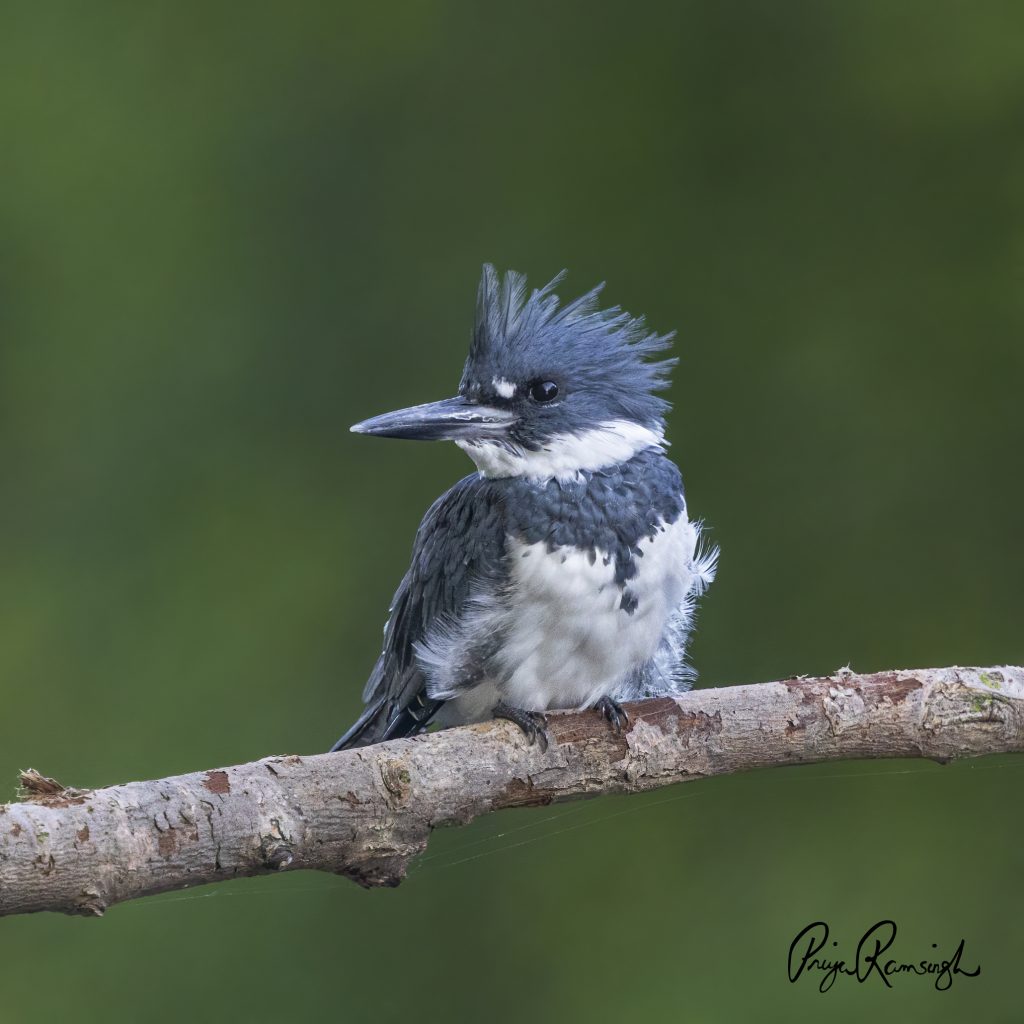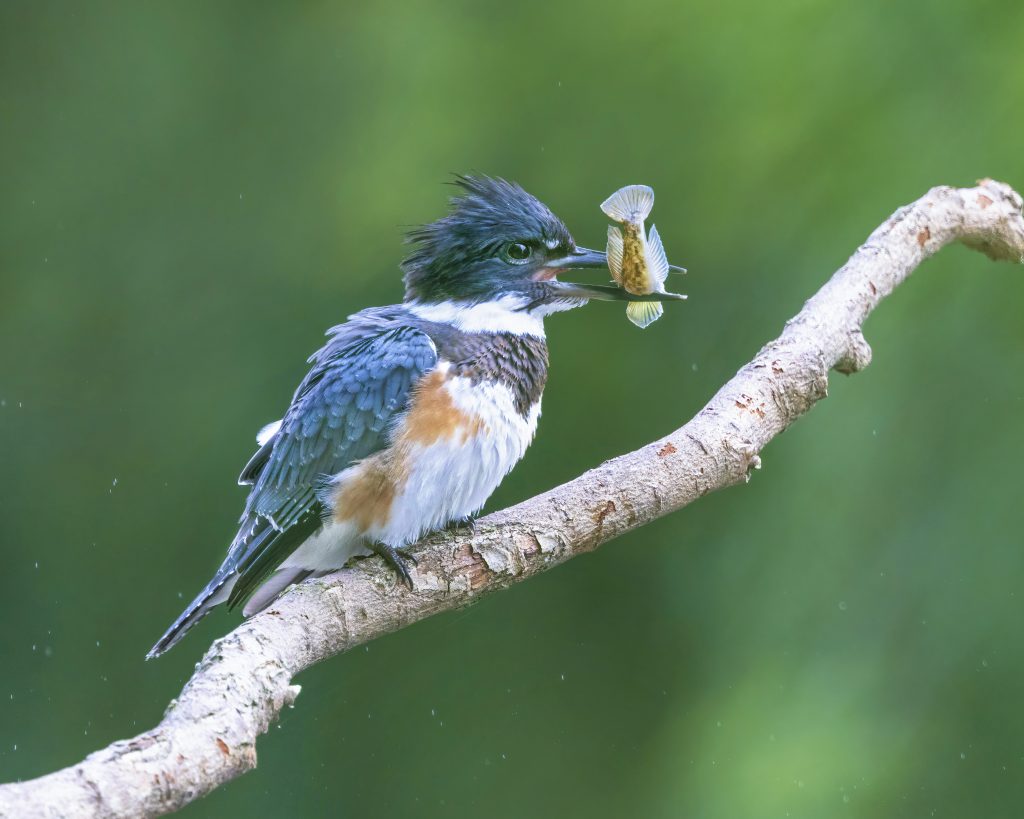
I was on route to look for the Kingfisher family when I saw the squirrel. The sun would be setting in a couple of hours and I was heading to the park where the family of fishing birds were raising their chicks. Having found them in mid-summer, I had been observing their behaviour and hoping they would get used to my presence so I could get some photographs. Usually, they were skittish, as most Kingfishers are. But once in a while, they became playful enough to land on a branch within sixteen metres of where I was situated, giving me a decent photo opportunity. Truthfully, it was a bit far for my liking, but getting close to these birds can be close to impossible without a blind.
Rush hour was in full swing as I headed down the street, birds on my mind, when suddenly, a small moving object came into view ahead. As I neared it, I saw a grey squirrel, bouncing around frantically on the side of the road. A cyclist beside me swerved to avoid it and my first thought was to follow suit and keep going. But then I found myself pulling into the first driveway on my left, which happened to be a gas station.
Opening the trunk of my car, I fished out a pair of work gloves and ran back to the street to see an older man in a scooter making his way toward the squirrel, a bag in hand. When our eyes met, I held up the gloves, and a look of relief washed over his face and he stopped.
Terror flooded the eyes of the struggling animal as I approached. Miraculously, there were no oncoming cars so I stepped onto the road and grabbed the squirrel – then immediately hesitated, wondering if it would bite. The animal became more panicked as I loosened my grip and it attempted to scramble out of my hands and further into the street. I tightened my grip, feeling the softness of the belly as I lifted it into the air.
Blood was seeping out of one ear as I placed the animal onto the grass. It was only then that I spoke to the man in the scooter. He thanked me, explaining that he didn’t want the animal to suffer in the road.
“What should we do?” I asked. “I have a crate in my car, should we move it into the crate?”
He thought it was a good idea so I fetched the crate that sits in the backseat of my car and helped rescue several distressed birds over the years. Once the frightened squirrel was placed inside, it lay beside the towel and stopped moving.
The man and I discussed next steps. The Toronto Wildlife Centre was already closed for the evening. Maybe the animal needed to be kept overnight to see if it could survive the next day. He lived a couple of blocks over and we decided to move the crate to his backyard.
When I arrived, his son and wife greeted me, already having heard the news of the rescue. I watched as the man moved himself from his scooter to a chair, and I wondered how he would have managed to rescue a squirrel in the middle of the street.
After some deliberation with the family, we decided to contact Animal Services, which was not too far from where I lived. They would be closing in 30 minutes, so I thanked the family for their concern and transported the squirrel – quiet and more subdued by this time.
Upon examination, Animal Services determined the back legs of the animal were broken, and the only course of action was to end its suffering. My mind recounted the softness of the fur, the wide eyes and perhaps a mate somewhere in a tree. I hesitated for a moment as they handed me the crate but I nodded and turned to go home. The sun was close to setting by this time and Kingfishers would have to wait until the next day.
My alarm goes off at 5 am every day, but I’m usually awake before the sound chimes. My routine consists of a quick coffee, a small breakfast, an hour or so of work and then out to the park to catch the early morning light before the harsh rays of the sun rendered photography pointless.
Once I got to the park, I decided to stand in a different spot than my usual place – much closer to area where the Kingfishers perched. I’m not sure why. My conscious mind was saying, ‘the bird will not land on the branch if it sees you standing there’. But I attached the monopod* to my camera and stood between two trees anyway, away from the bank but clearly visible.

I had only just adjusted my focus to the branch, when I saw a flash of wings and one of the juvenile* birds landed. It turned and faced me. Our eyes locked and I snapped my shutter continuously while we watched one another. Then the bird dove into the water. A couple of seconds later, it reappeared on the branch with what looked like an insect. Turning towards me, the bird held the catch up in the air, and dangled it for a couple of seconds before swallowing it whole. I just kept hitting my shutter button to capture the moments.
Another dive and up it came, this time with a red leaf. Puzzled, I continued to click as the little Kingfisher tossed the leaf into the air, threw me an over-the-shoulder glance, and dropped it back into the water.
A third dive produced a fish – an invasive Goby. The bird showed me the fish, edged down the perch in my direction and beat it around for a bit before flying off to eat it elsewhere. It was only then that I allowed my shoulders to relax.
I could have gone home at that moment. These were the photos I wanted, but the light was still a bit low, and I had a bit more time before heading back to work. So I wandered down the creek, hoping another one of the family members would be as accommodating.
But after about twenty minutes, with no success, I decided it was time to go home. As I shut off my camera, the juvie came flying back up the creek. Grabbing my gear, I ran back over to the spot near the branch, and had just enough time to attach the monopod and adjust the focus before the bird landed with another fish. This time, after showing off the Goby for a minute or so, the Kingfisher swallowed it, making sure to throw me a glance every so often.
After the meal, the bird flew away, and I turned off the camera and walked back to my car. It was on the drive home that I thought about the squirrel.
Two separate incidents – two separate times in nature. But I reminded myself that Kingfishers are nicknamed the ‘Devil Bird’ for a reason. Skittish, cheeky and intolerant of people, they are one of the most difficult birds to photograph. Perhaps I just got lucky and caught the bird in a good mood.
But a part of me can’t help but wonder if Mother Nature is more powerful than we believe. Perhaps, in some ethereal gesture, she was acknowledging the act of a physically impaired man and a wildlife photographer who came together to care.
*Monopod – holds up your camera, similar to a tripod but only has one leg. Allows the photographer to stabilize the camera.
*Juvenile – Young bird.
